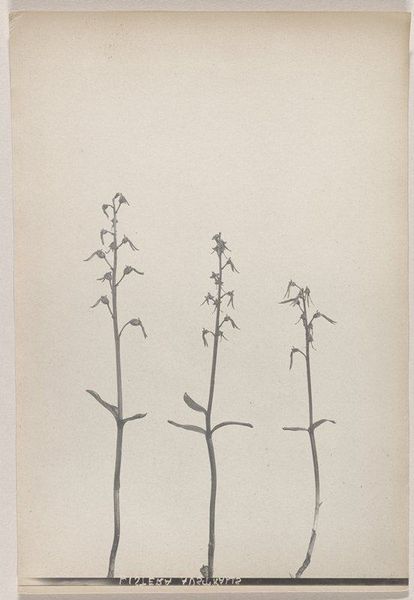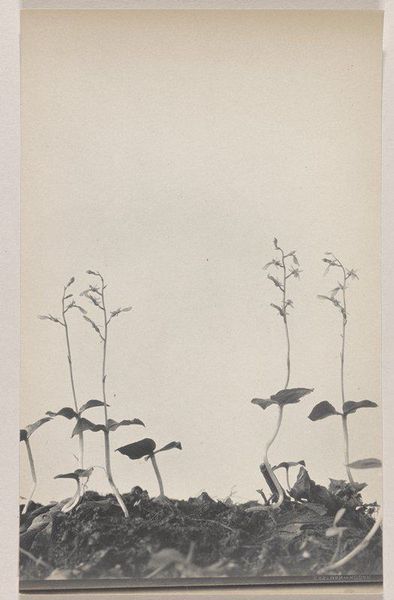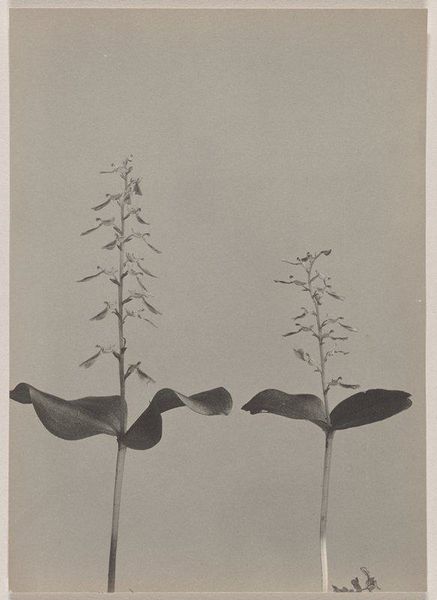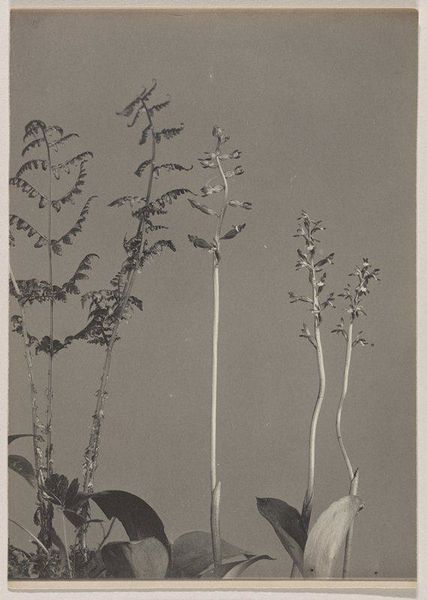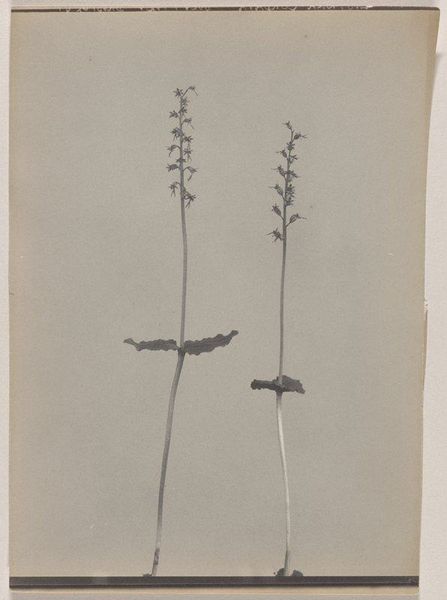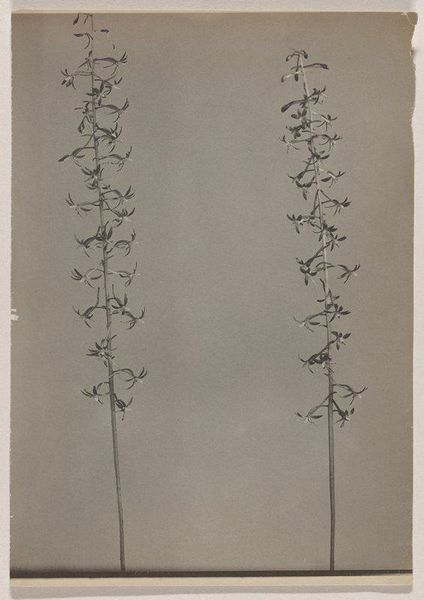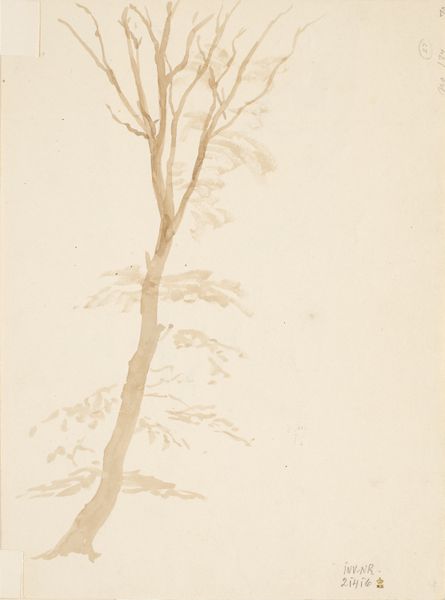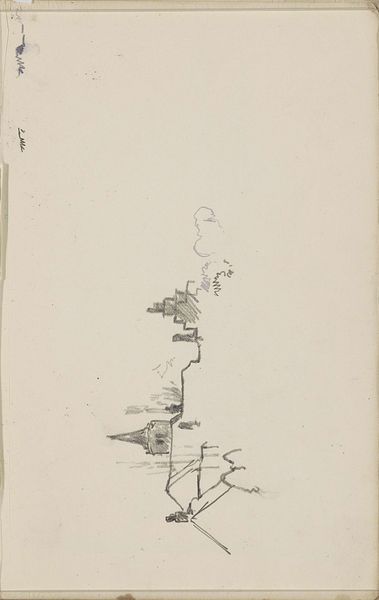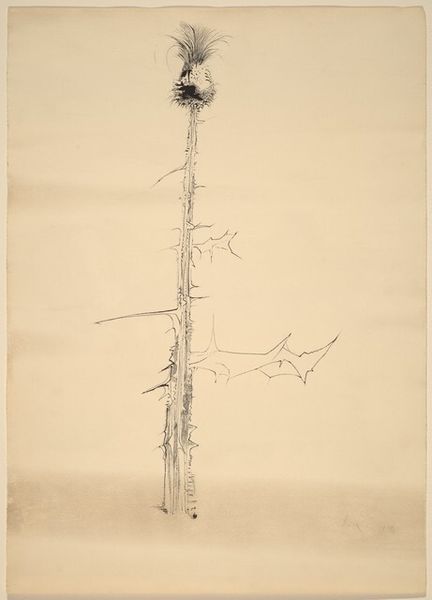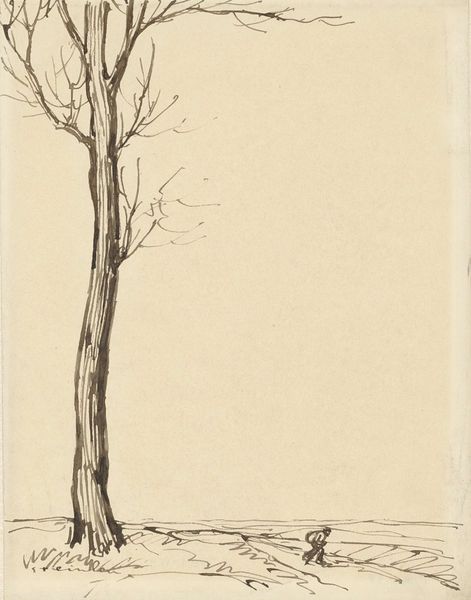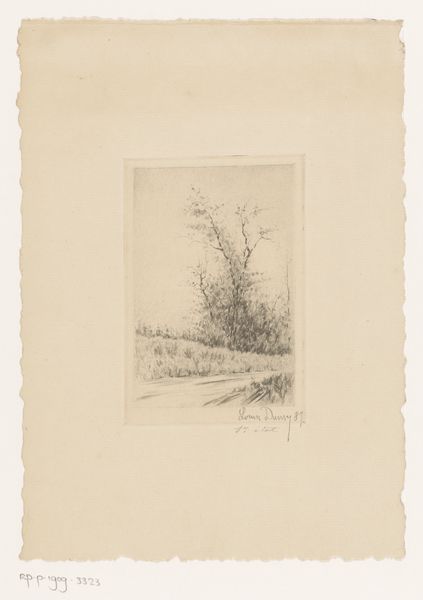
photography, gelatin-silver-print
#
photography
#
gelatin-silver-print
Dimensions: 9 11/16 x 6 5/8 in. (24.61 x 16.83 cm) (image)10 x 6 5/8 in. (25.4 x 16.83 cm) (sheet)
Copyright: No Copyright - United States
Editor: So, here we have Edwin Hale Lincoln's gelatin silver print, "Listera auriculata- Auricled Twayblade", from 1931. It feels like such a delicate, almost clinical study of these plants. What strikes you most about it? Curator: Well, placing this within the history of photography and botany, it reflects a cultural moment intensely interested in cataloging and classifying the natural world. Photography allowed for a seemingly objective rendering of flora, fitting neatly within scientific ambitions of the era. How do you see this piece functioning beyond just documentation? Editor: I guess I hadn't considered it that way! I was so focused on its aesthetic. Perhaps it speaks to the broader societal desire to understand and control nature, a visual inventory during a period of significant environmental change. I'm wondering though, who was the intended audience and what was the goal of making art of these scientific observations? Curator: Precisely! Likely this wasn't intended solely for a gallery. Botanical societies, scientific journals, even educational institutions, were important venues. Its public role becomes significant when you consider photography's increasing accessibility. Lincoln's work participates in democratizing knowledge but simultaneously reinforces the institutional power behind scientific observation. Does the uniformity and the starkness evoke that feeling in you at all? Editor: Yes, that tension is definitely there! The photograph presents what seems to be straightforward visual information, yet it's clearly framed and presented to shape perception. It's both art and science. Thank you for highlighting the historic institutional purpose and accessibility for diverse communities and allowing me to learn that art goes beyond aesthetics! Curator: Absolutely, and that’s what makes exploring the history such an artwork rewarding, isn't it? Shifting perspectives and enriching our comprehension of art's place in broader contexts.
Comments
No comments
Be the first to comment and join the conversation on the ultimate creative platform.
